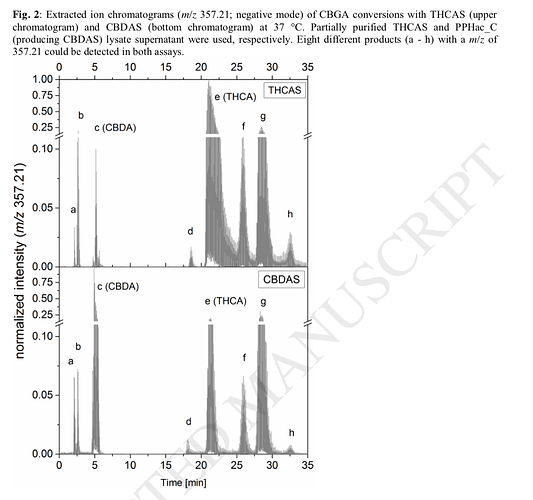Why would “thca synthase has been shown to make CBDA in vitro" mean “there MUST be CBD in all THC distillate”?!?
Scihub sys it doesn’t have the paper I’m refereing to, but @seth posted a pre-print for us.
I have no idea if any of their “unknowns” are D8, but I personally wouldn’t rule it out simply because you don’t think it’s a possibility…
would it not then create a similar ratio of D8 in his high D9 samples?
a BETTER fit to the data would be the proposal that @Dr_Jebril’s method turns some of his CBD to D8
that accounts for ratio with D9 not being the same…which your hypothesis does not.
IMO that doesn’t fit all the data…
we actually have the molecular modelling software and appropriate structures required to look at the problem…it should be relatively easy to show I’m wrong computationally.
